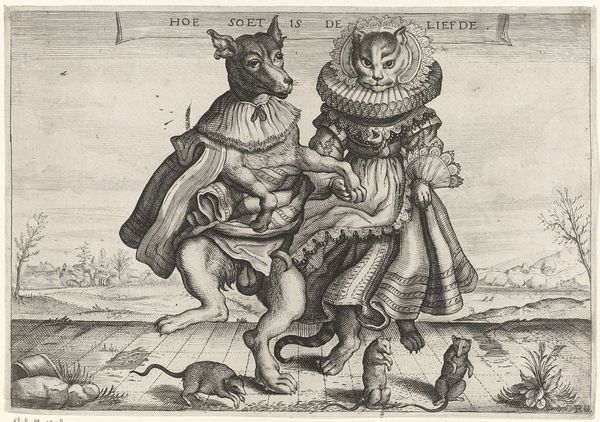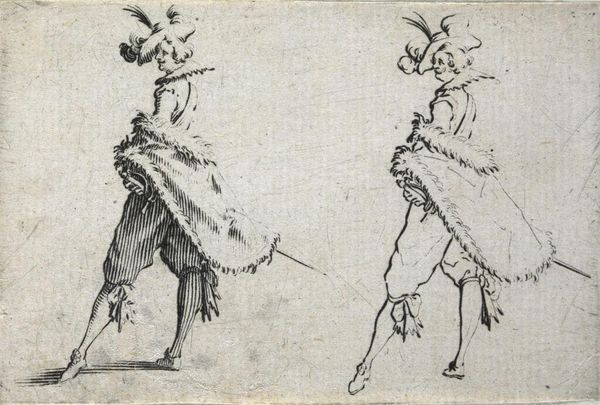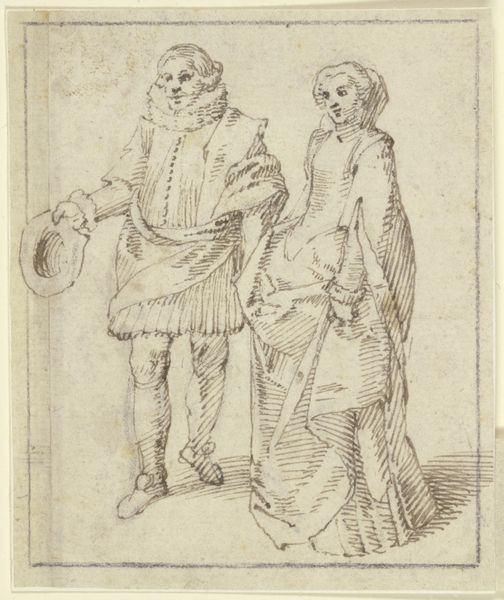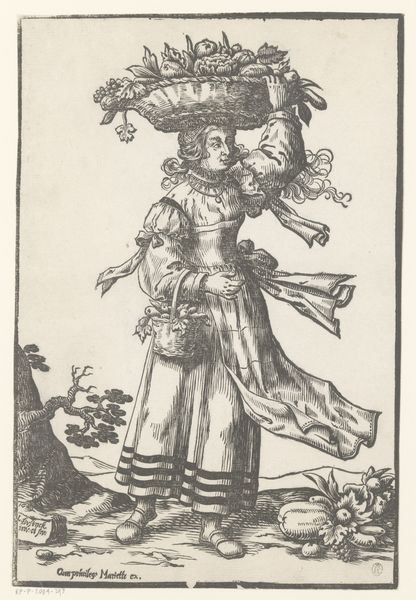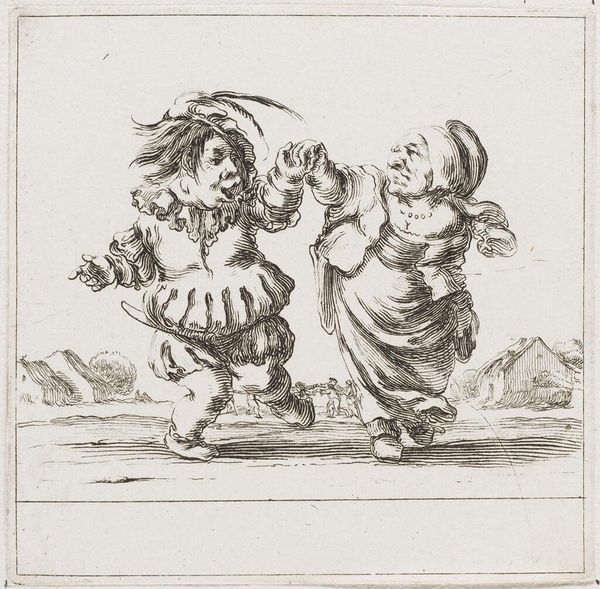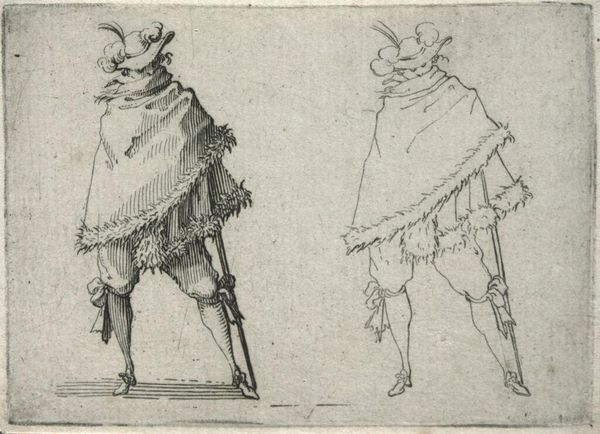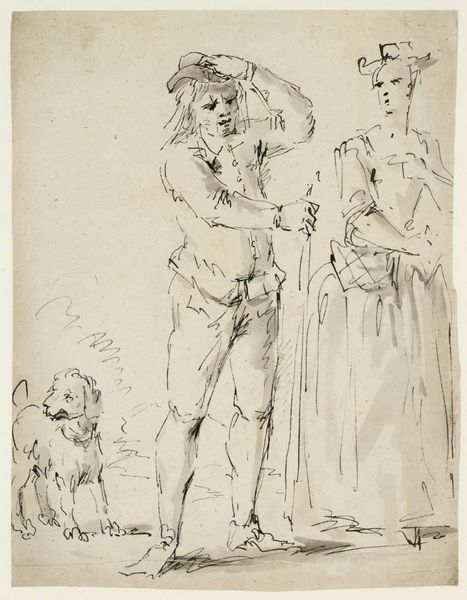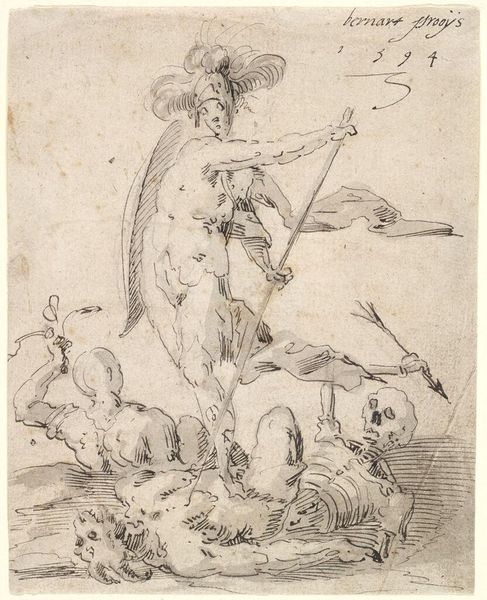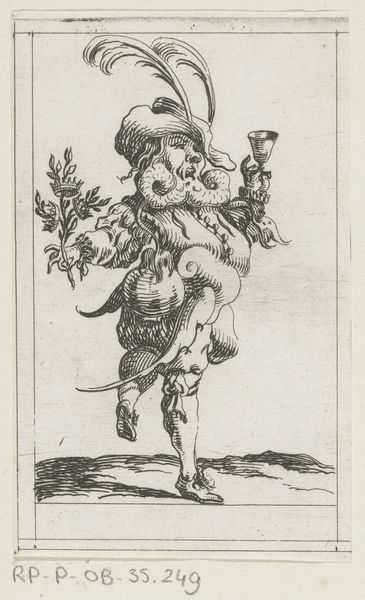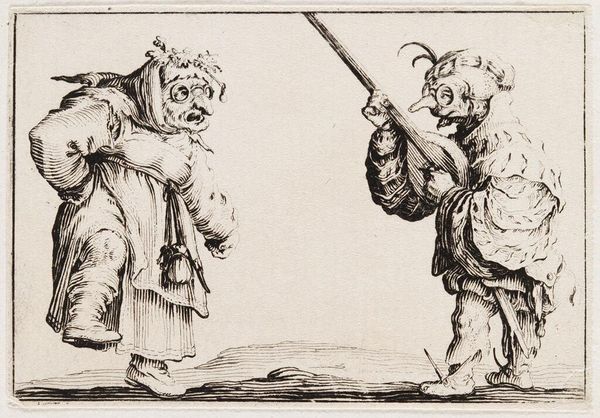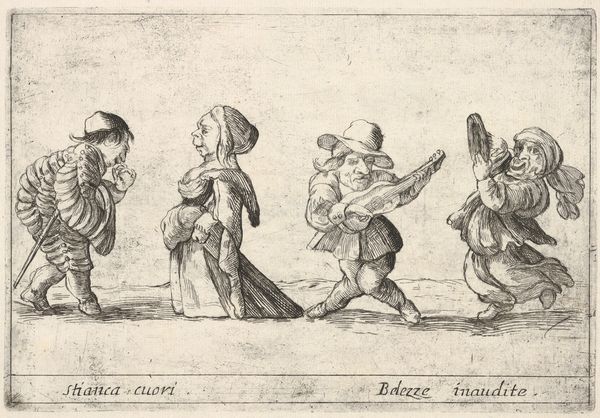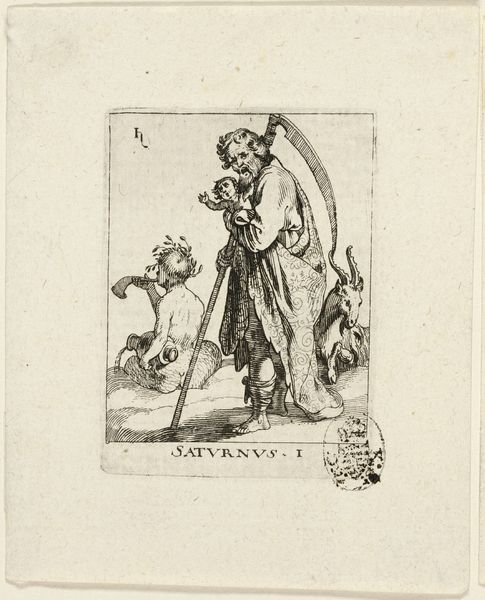
drawing, ink, pen
#
portrait
#
drawing
#
dog
#
figuration
#
ink
#
pen
#
genre-painting
Dimensions: height 207 mm, width 183 mm
Copyright: Rijks Museum: Open Domain
Curator: Here we have an anonymous drawing from sometime between 1630 and 1699, currently held in the Rijksmuseum’s collection. It is executed in pen and ink, portraying, as the title indicates, "A Dancing Cat and Dog." Editor: My initial response is one of amusement, quickly followed by intrigue. The stark monochromatic palette emphasizes the absurd theatricality of the scene—these animals, so meticulously rendered, are far removed from their natural states. Curator: Absolutely, the visual jest plays into a long history of anthropomorphic depictions laden with symbolic meaning. The dog and cat, traditional enemies, presented here in partnered dance, speaks volumes. Editor: It's the costuming that amplifies the drama—the elaborate ruffs, the drapery. They're signifiers of wealth and status, layered upon these animal figures to heighten the satirical effect. Look at the formal pose struck by both of them, it’s quite performative. Curator: Precisely. The surrounding mice further enrich the imagery, they are also very carefully observed in detail. The contrast between the seemingly elevated dog and cat, and the scampering mice creates a subtle visual hierarchy, reflective, perhaps, of societal structures during that time. Remember how the wealthy saw themselves above others, including peasants and the poor, or maybe an image about masters over servants? Editor: I’d say so! The artist’s choice of line work is so decisive—it defines form and texture with equal precision. But that begs the question of authorial intent: Were they critiquing the social norms of their era through this comical façade? Or was this meant simply to entertain, to depict a bizarre scenario detached from wider implication? Curator: Probably both at once. Genre paintings always invite readings from multiple levels. Humor served as a convenient vehicle for more profound commentary, providing a guise beneath which cultural anxieties or social observations could be cautiously explored. The ongoing popularity of this image indicates the ability to appeal across the board and trigger recognition. Editor: It's a bizarre and compelling tableau, really, inviting continuous speculation about its many implications and layers. Curator: I fully agree! And on that note, our short journey through symbolic interpretation ends.
Comments
rijksmuseum about 2 years ago
⋮
In the 17th century, and even now, portraying animals as humans was a popular way of conveying a humorous or satirical message. According to Adriaen van de Venne, the ‘foolish animals’ in his work stand for the seven deadly sins. The dancing cat and dog in this drawing represent Lust and the rats scuttling around Wrath.
Join the conversation
Join millions of artists and users on Artera today and experience the ultimate creative platform.

